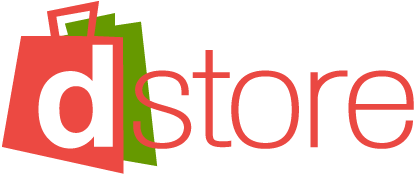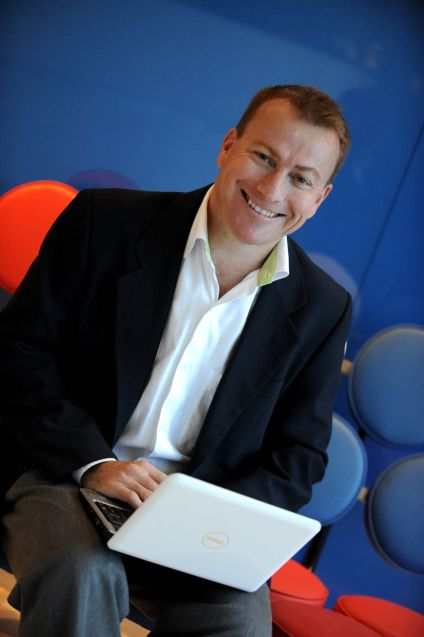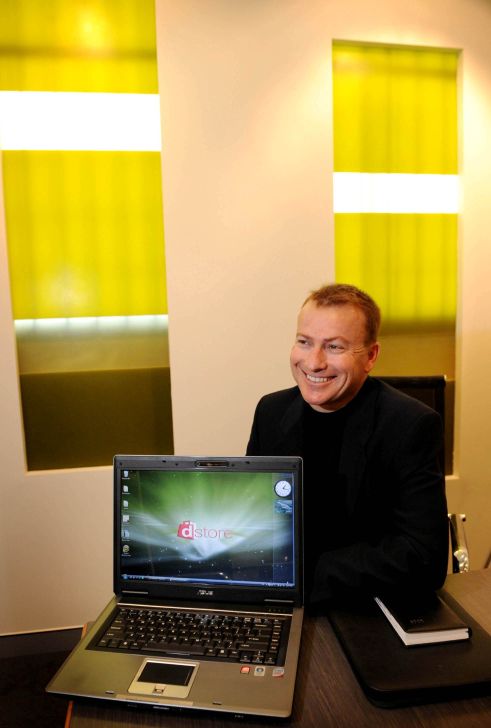dstore innovates its way forward

dStore innovates its way forward.
A HOT NEW Case study of how dStore and it’s innovative owner and CEO Andrew Cooper continuously strive to add value to their customers and brand.

dStore =department store
The revival of dStore.com.au as we know it today is thanks to Andrew Cooper,CEO and current owner of dStore.com.au Andrew’s ability to see what was wrong with the original dStore, and have the courage to take the remains, and resurrect it to be one of the top ten online retailers in Australia is truly remarkable. Like any successful business there has been a lot of hard work that has gone into building dStore into what it is today. Andrew says the early years were hard as the dStore brand had a high profile failure and had been run under administration. It took a lot of hard work to win back customers trust in the dStore brand. Always the visionary, Andrew plans to add further value and convenience to his customers by opening up the first dStore department store in Brisbane.
History
dStore.com.au (short for department store) is one of Australia’s iconic online brands that was established in 1999 during the heyday of the global dot com boom by David Gold, former vice president of business development for Looksmart Australia. As an online department store, dStore sold a wide variety of goods, managed their own logistics, and utilised national television to establish national brand recognition before the dot com bust in 2001. dStore at one point raised AU$36 million in a share offering. The company burned through approximately $25 million without turning a profit, before being sold off to the Harris Scarfe group in November 2000. In April 2001 Harris Scarfe was placed into receivership. Andrew Cooper and his brother Tim, owners of Hotshed, a customer relationship management software (CRM) company focusing on ecommerce integrated platforms looked at the brand and concept, and were confident they could turn dStore around. It would also be a great endorsement for their own CRM software. Capital was raised (reported to be $615,000) and the customer database and the dStore brand were acquired in September 2001. The Cooper brothers immediately cut dStore’s staff, removed unprofitable lines from inventory, focusing on items that would sell well online such as Computer Games, jewellery, Cd’s/DVD’s and books. They also applied a new business model removing the need for a warehouse, and instead electing to use third party suppliers to drop ship. Andrew suggests they were the first to adopt the drop ship model. (i.e rely on third party vendors to fulfill orders).
Hotshed Technology turned dStore around
Andrew and Tim’s company, Hotshed which was established in 1998 offered an ecommerce platform that was integrated and pretty much cutting edge for the late 90’s. At that time people and businesses were flocking online to sell their wares. One of the biggest issues in the late 90’s was the inability of many online sellers to be able to automatically manage their inventory levels. This led to sellers having items showing on their site yet when orders were placed they were not able to fill these orders, leaving customers irate. An online business was established by the brothers called Topshop, which sold computer games. Topshop was a test bed for the Hotshed software, which could be used to demonstrate to potential clients a working model of the software.
The integrated software platform therefore was an obvious choice to many retailers and was licensed to Blockbuster video, Rebel sport and Angus and Coote. Unfortunately many of the retailers had channel conflict and store managers saw an online presence as a threat. This channel conflict in Andrew’s opinion is the reason today why the top end of town have not yet adopted some form of online trading model, although larger retailers are sitting up and taking notice. One of the original dStore’s biggest failings was the operating cost per shipment of order. As more orders came in, more staff had to be put on to handle this volume of orders (reaching 120 at one point). Andrew was confident his Hotshed platform could run the entire operation with no more than 10 staff.
Part of the unique selling proposition of dStore is continuously building the back end. Andrew sees Hotshed’s proprietary technology as dStore’s competitive advantage. The ability to move data around and have robust systems to manage the fulfilment output of third parties, dashboards to provide analytical data such as pick pack rates, speed to delivery and other vital statistics give the management team vital data on a daily basis which enables them to continuously streamline the operation. They have access to Suppliers warehousing information so they can view stock levels and deal with any red flags. Suppliers can also print packing slips and delivery labels via this integrated data to make the drop ship experience appear sea
mless to the supplier. Andrew says that drop shipping can only work if the data from all suppliers is excellent.
Currently the site is hosted by servers in Brisbane at a third party server farm.
Financial
In the Christmas quarter 2001 dStore announced a break even result. Not a bad turnaround for a company losing millions of dollars. In February 2003 zdnet.com.au announced that dStore had returned its first profitable quarter, turning a small profit of AU $35,000 on sales of $1,3million (for the Dec 2002 quarter) since it was purchased from receivers Ferrier-Hodgson.
In March 2008 the early ripple effects of the Global financial crisis began to be felt. Prior to this growth in the company had been 20%- 25% per annum but started to slow down to 10%-12% per annum. Margin is 7-8% of net sales.
Management objectives and strategy
Andrew says that dStore has still not achieved its objectives, it is currently number 3 or 4 in the pecking order. There is a bold plan to open a dStore retail outlet in Brisbane. The model will be a ship to door or collect from store (such as Argos). 40% of consumers said they “preferred convenience over price point”. The store will have merchandise at the front of the store and stock in a warehouse environment at the back of the store. The ideas is a blend of Ikea and a department store. Customers will be able to order in store and take home, or have goods delivered, as well as order online and collect in store.
Marketing
dStore offers over 8000 products across a variety of categories. To drive customers to the site, amongst other things, dStore uses Google adwords and some other forms of online marketing. To date no “above the line” traditional marketing has been used. dStore aims to continue to create a compelling and fashionable offering to its existing and potential new clients.
Andrew is closely watching the space on mobile development, as the iphone and smartphones gain foothold and more and more people start to use their devices for checking email, comparison shopping etc. He is also looking at a survey of 8000 customers aged 14 – 85, as there is a large awareness on providing absolute convenience while providing a level of trust to ensure customers feel comfortable shopping online at dStore. The results of the survey have said the convenience of being able to shop anywhere at anytime was the biggest motivating factor for more than 40% of respondents and saving money on petrol was also high on the priority list. The site was even being utilised by 85 year old grannies espousing the sites ease of use and convenience factor.
In March 2009 dStore received the best shopping website in the Australian NetGuide Web Awards, held in Sydney.
Head office team
There are about 8 people at Head office (at time of writing) half are technologists and half are management. Andrew calls all his team screen jockeys, everything is about data analysis. There is a very strong team orientation. Everyone is involved in strategic planning. Andrew says that he likes to foster an environment where there is more to his workplace than just a job. The team has core values and everyone at dStore has a personal growth story. Everyone is also encouraged to venture out and obtain new forms of external learning so everyone continues to grow.
On Drop shipping and the customer experience
All parcels are fully labelled as dStore. Each supplier uses Hotshed’s software module to print the packing slips that are placed in each delivery. They also use the module to print the delivery labels that go on the exterior of the box. This is fully integrated with Aus Post, AAE and others so that dStore can track those parcels directly from their Hotshed CRM package rather than having to deal with the supplier.
On e commerce and some advice:
The business challenges in an online operation are very similar BUT the detail is different says Andrew. They way and how you go about doing things in a traditional retail business will not always work online.
Andrew worries about small chains that tackle the online channel without knowing what online entails. Andrew feels they have the potential to damage their brand by going online.
If you believe you can manage and control outsourcing overseas only then should you attempt it.
If an upstart seeks advice, Andrew always asks for a business plan
People underestimate what it takes to firstly open, then manage an online retailing business
About Andrew
Andrew is an entrepreneur with a varied business background. Along with his software and online retailing businesses he also owns video stores, car washes and property interests. He also has a strong interest in fostering entrepreneurship and is president of the Brisbane branch of Entrepreneur’s Organisation (EO), a network of over 10,000 entrepreneurs across the globe.
References:
zdnet.com.au
smartcompany.com.au
dstore.com.au and Andrew Cooper
Comment Manually
You must be logged in to post a comment.


No comments